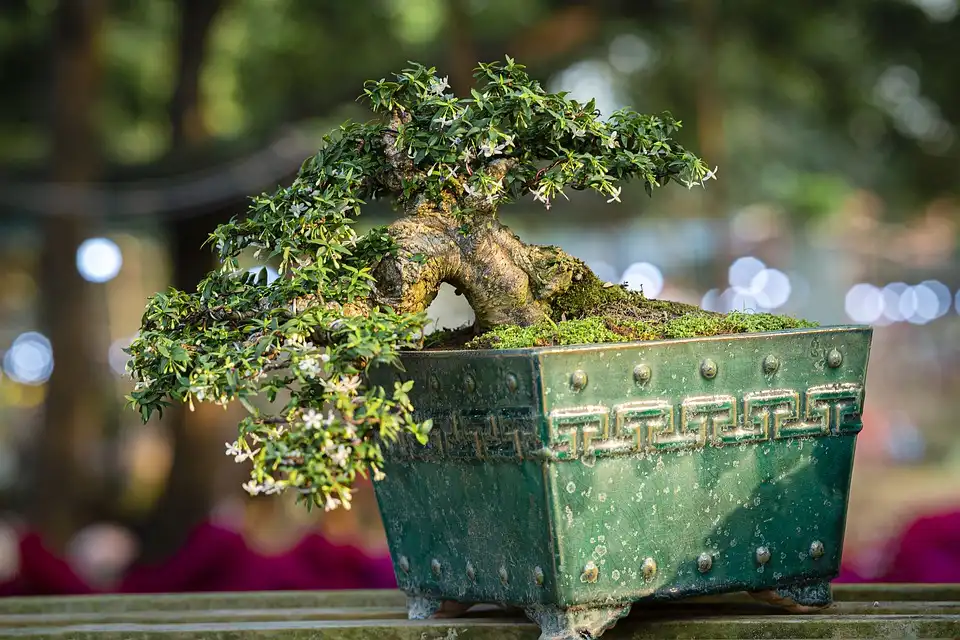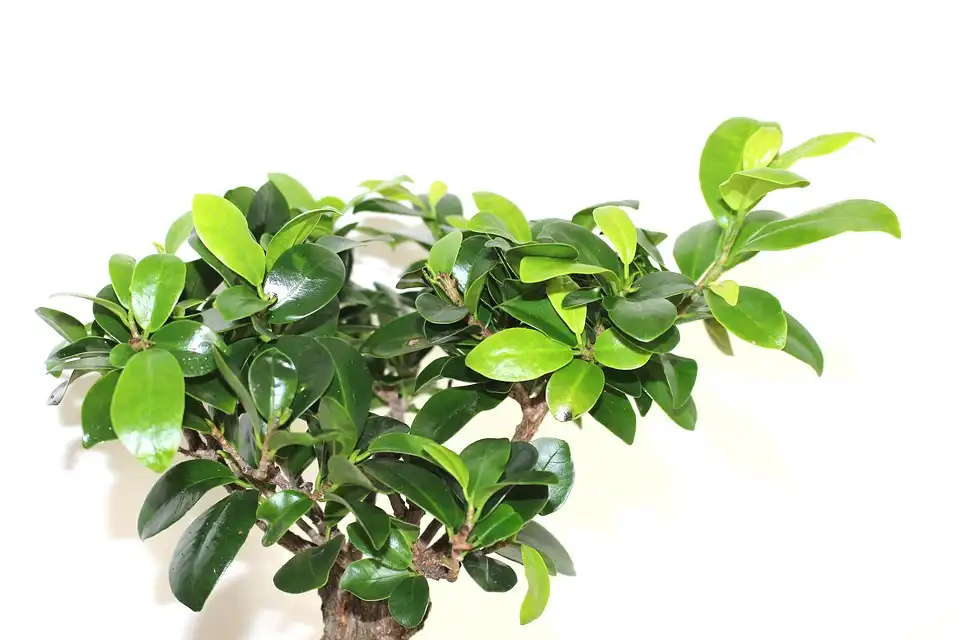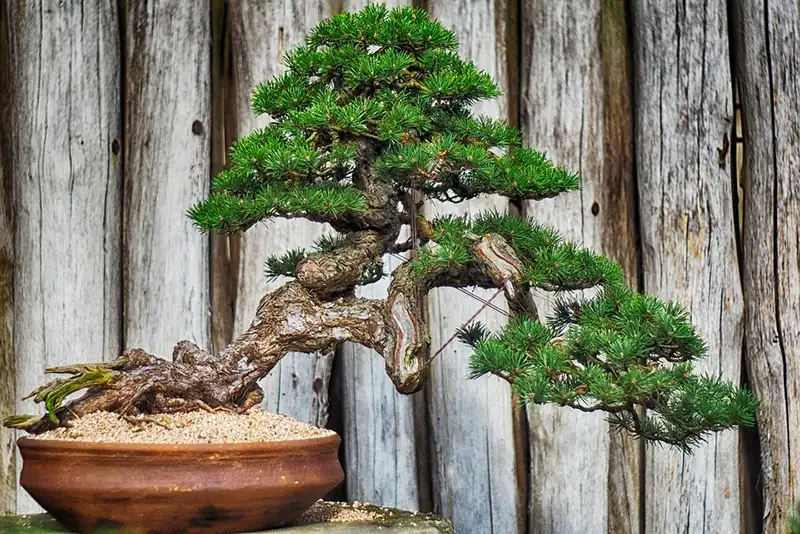How to Turn Nursery Stock or Wild Harvested Plants Into Bonsai
One of the joys of bonsai is taking a regular tree with great potential and turning it into a bonsai tree. There’s something very satisfying about training a bonsai from scratch and developing it into a work of art. While many people, especially beginners, prefer starting with a tree that is already a bonsai, it can be a great experience to learn how to develop a bonsai from raw material.
This article will look at how to start turning regular nursery stock, or even wild-grown trees, into beautiful bonsai. We will be covering the following topics:
This article will look at how to start turning regular nursery stock, or even wild-grown trees, into beautiful bonsai. We will be covering the following topics:
01
02
03
04
05
Why Use Nursery Stock or Wild Harvest Trees in Bonsai?
When bonsai was first developed in China, they used trees harvested from the wild to create their miniature landscapes. Many great bonsai nurseries produce amazing miniature trees for enthusiasts to buy these days. While it is entirely possible to enjoy the hobby solely with purchased bonsai, there is something very special about seeing a bonsai in nursery stock or even the wild and then creating a bonsai from nursery stock or wild trees.
What Is the Difference Between Nursery Stock and Harvested Trees?
Nursery stock is trees and plants sold at a nursery. They have not been trained or developed as bonsai and, in most cases, have been left to grow freely. It can sometimes be rather difficult to see the hidden bonsai among the natural growth. However, that is part of what makes it so exciting. You’ll probably learn more about the trees and their natural growing patterns by spending some time working with nursery stock.
Harvested or wild collected trees are as the name suggests. These trees have grown naturally in nature, benefiting from the weather and other conditions that make trees grow interesting and unique. It’s important to note that removing wild trees from a property is illegal without the owner’s permission.
Benefits of Working With Nursery Stock or Wild Trees
Let’s look at some of the benefits of creating bonsai from nursery stock or wild trees.
Affordable
If budget is a concern, getting nursery stock or even taking trees from the wild can be a great solution. As a lot of time and effort goes into training a bonsai, buying one can sometimes be expensive. Whereas if you look at nursery stock, you’ll likely be able to get the same species for a lot cheaper. Many nurseries also have discounts and specials on certain trees throughout the year so that you can get a nice pre-bonsai or potential bonsai stock for a really good price. You’ll have to do all the training yourself, though, so keep that in mind. It might also take longer to get a proper bonsai than directly purchasing one.
Challenging
Creating bonsai from nursery stock can also be an exciting challenge. You’ll have to look through all the other nursery stock to find the perfect pre-bonsai among them. Sometimes you might not even find a tree with great potential. Then, when you find a good bonsai candidate, it will be up to you to realize the vision for your tree. You’ll have to do all the training, trimming, and repotting yourself.
Great Way to Learn
It is very nice to save up and buy a proper bonsai that has already been trained. Every collection can benefit from a few mature and professionally trained bonsai. However, I’ve found that the fastest way to learn is to start working with nursery stock or even trees collected from the wild. In these cases, you’ll have to do root pruning, repotting, styling, training, and wiring yourself. You’ll have to find the front of the tree and the best style to train the tree in. Also, if you make a mistake on one of these, it’s not an expensive bonsai that suffers. Nobody wants to kill an expensive bonsai, so you need all the experience you can get by practicing as much as you can.
More Control
If you buy a mature bonsai, most of the training has already been done, and it’s more about maintaining the shape and health of the tree and addressing any changes as they come. While this is rewarding in its own right, you have more control if you work on nursery stock or trees from the wild. You’ll be the one observing the tree for possible styles. You will be the one training the tree and shaping it into your vision (guided by the tree, of course).
Is it Better to Buy Bonsai That Is Already Prepared?
Many bonsai enthusiasts prefer buying bonsai that have already been trained. This way, you already have a bonsai and don’t have to wait a few years before having a bonsai. Buying a bonsai means that you’ll already have a mature bonsai to keep you motivated and interested. A mature bonsai is also less fragile as it is already accustomed to its growing conditions.
As long as you keep it in the right location, water, and fertilize appropriately, you can enjoy its beauty for many more years. While there are many benefits of buying a bonsai, there’s no reason why you can’t do both. Save up and spend your money on mature bonsai that really speaks to you. At the same time, get a few pre-bonsai from nursery stock or the wild that you can work on to gain more experience.
How to Select Bonsai from Nursery Stock or Wild Trees?
Choosing a pre-bonsai from nursery stock or even in the wild isn’t just about buying any tree there is. While you can do that, it may cost a lot of money and make a lot of work for yourself. Instead, you should take your time and make sure you choose the right trees to make into bonsai.
Choosing From Nursery Stock
When looking at trees at a nursery, it can sometimes become overwhelming because there is usually more than one tree of the same species, and they all look different from one another. Knowing a few things to look out for can make the process easier and more enjoyable.
First, you want to look for a tree with a decently thick trunk. Although you can buy a tree with a thinner trunk if it has other characteristics that you like, a thinner trunk might just take longer to be developed into a full bonsai as you might need a few years to thicken the trunk.
Next, you’ll also want to look for a tree with good movement. All the best, bonsai have beautiful movement and taper. While it is possible to develop this movement by using wire or the clip and grow technique, it is faster to select a tree that already has some movement.
Finally, make sure that you select trees with some character. You want your bonsai to be interesting to look at. Again, the character can be created later on by using different techniques like jinning and carving, and maturity will also bring character. It is easier to choose a tree that already has some character to it.
By bearing these things in mind when looking at nursery stock, you’re sure to get a few beauties that you can train as pre-bonsai and eventually develop into stunning mature bonsai.
Choosing From Wild Grown Trees
With wild-grown trees, you want to bear the same in mind. Look for trees with a decent trunk, movement, taper, and character. However, with trees in the wild, you’ll have to consider a few other things as well.
First, you want to make sure that you have permission from the landowner to remove the tree. It is illegal in most parts of the world to remove a tree from a property without the owners’ consent.
Another thing to bear in mind is the time of year you want to remove the tree. Unlike nursery trees that come in a pot or nursery bag, a wild tree will have to be removed from the soil, which is extremely stressful and can kill the tree if done at the wrong time of the year. The best time of year to remove a tree from the wild is in late winter or early Spring before new buds have started forming.
Finally, you’ll need to come prepared to remove a tree from the wild. You may need a trowel or shovel to lift the tree from the ground, depending on the tree. The best way to do this is to remove any other vegetation from the tree’s base. Then you want to use your shovel or trowel to dig a trench about two feet in diameter around the tree. Determining how deep to dig the trench will depend on the size of the tree.
You want to go as deep as to reach the tips of the lower feeder roots. Then you’ll have to lift the tree out of the ground slowly, trying to keep as much of the root ball intact. Then you want to place the root ball into a plastic bag (either a garbage bag or shopping bag) and make sure to spray the entire root ball with water to keep the roots moist during the journey to your home. A darker plastic bag would work better as it would limit light exposure to the roots.
How to Make a Bonsai Tree from Nursery Stock or Wild Trees?
So you’ve looked at nursery stock and bought a potential candidate, but where do you start? It can be a bit challenging to work with nursery or wild stock that hasn’t been prepped or trained for bonsai. You’ll have to work with the raw material from scratch. Luckily, it’s much easier than it first appears.
Step 1: Evaluate If You Need/Can Repot
Depending on the time of year, your resources, and the health of the new tree, you need to decide if you’ll be repotting. If it is late winter/early spring or the tree is pot bound or unhealthy in its current pot, you can repot the new tree immediately. In this case, you’ll probably need to do some root pruning as well.
Since these trees aren’t grown as bonsai, you’ll likely find thick taproots and older feeder roots. You’ll have to trim these quite severely to fit the tree into a bonsai pot. If this makes you nervous, you can chop half the root, place it in a deeper training pot and remove the rest of the root next Spring before going into a bonsai pot.
If you’re buying the tree in late summer, fall, or early winter and the tree is healthy with no roots coming from the drainage holes; it would be best to keep the tree in the nursery pot until late Winter/early Spring when it is the ideal time to repot. You can still continue with the next steps to get the training started.
Step 2: Evaluate the Tree
Next, you need to evaluate the tree. Turn it and look at it from all angles and don’t be afraid to tilt it to see if a cascade style might work. Note anything interesting about the tree you want to preserve, any styles for training that would look good, and find the front of the tree. When doing this, you may find more than one option for your tree. Here you can rely on personal preference to make your final decision.
Step 3: Start Pruning the Tree
Now that you have an idea of what you want for the tree and you’ve found the front of the tree, you can start pruning. With nursery or wild stock, you may find this a large undertaking, and you may be removing a lot of material. Start by removing any unwanted branches. These can be branches growing too low on the trunk, branches crossing the trunk, branches growing straight up or down, and even areas where multiple branches sprout from the same bud. Once you’ve done this, you’ll have a much clearer view of your tree. Now you can start refining your pruning and make strategic cuts to create your chosen style.
Step 4: Wire the Tree If Needed
With the pruning done, you can start wiring your tree if it needs it. Don’t just wire a tree for the sake of wiring, but use it strategically to manipulate specific branches into a position that matches the style of your tree.
Step 5: Water and Place in the Ideal Location
Once you’ve done all this, give your tree a thorough watering and place it in the ideal location. Make sure to look at a maintenance guide for the species you have to ensure you know its requirements, i.e., watering, lighting, etc.
Final Thoughts
While there is nothing wrong with buying an established bonsai, I think every collection should have a few established miniature trees. There is something very satisfying by taking unassuming nursery stock of wild plants and transforming them into bonsai. Granted, it will take longer before becoming a mature bonsai, but the wait is well worth it to see how you create bonsai from nursery stock.







